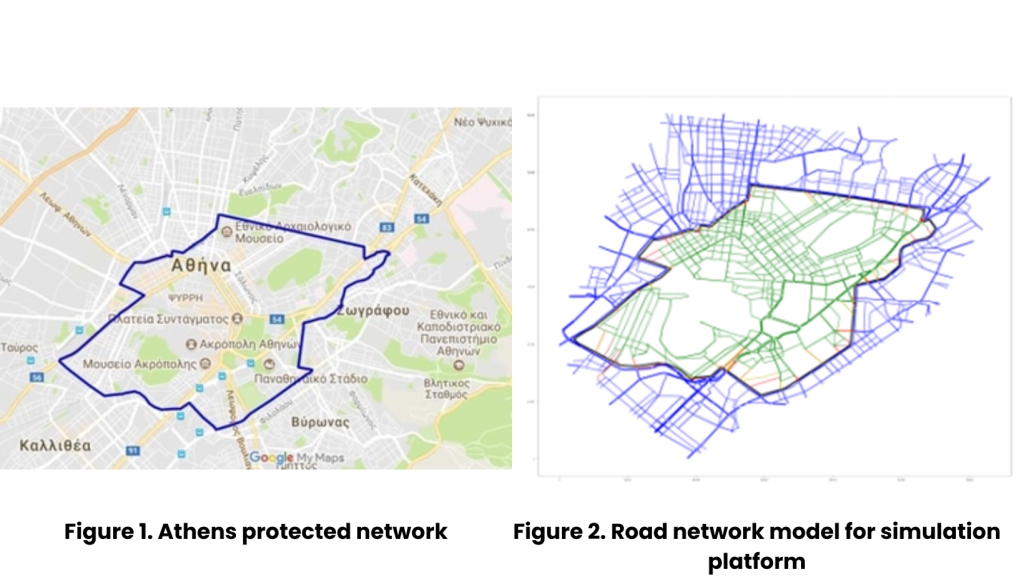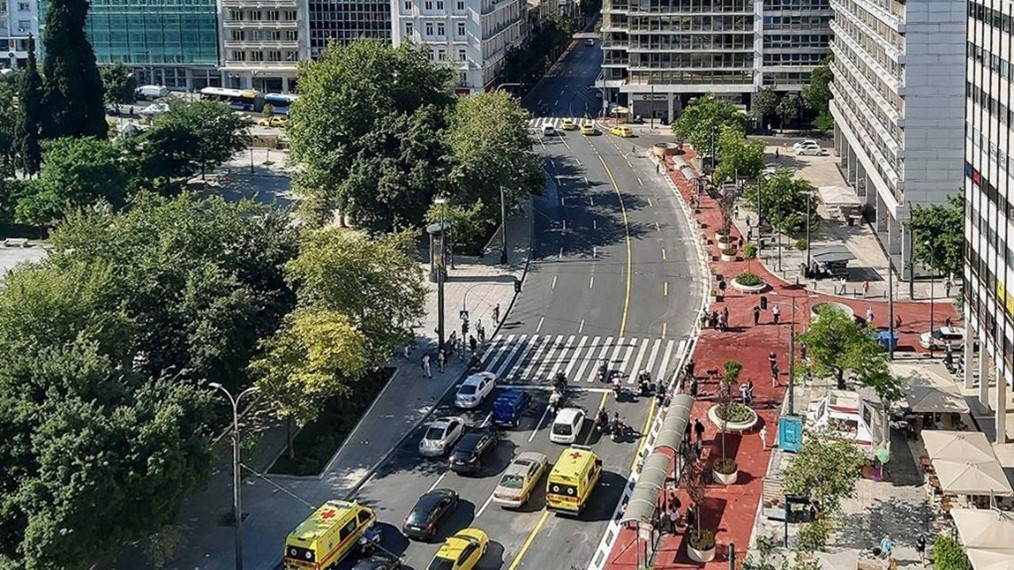AI-Assisted Perimeter Control A simulation is planned in Athens to test almost all the concepts and systems being developed in DIT4TraM. The intention is to integrate the modules, model-wise at least, into the Athens traffic management system. After that, we will calculate the effect of the ‘swarm intelligence ‘ on traffic flow, safety, liveability, and resilience.

Athens is a very big and old city, with a population of about 4 million citizens at the greater area of Attica (3 million at the city center). Due to the complexity of the road network, the overpopulation and the high percentage of private vehicle usage, the road network of Athens faces a severe congestion problem. In order to alleviate the unsustainable conditions, authorities of the Municipality of Athens and the region of Attica have enforced the following measures:
- A protected (“green”) network is defined at the most critical areas of the city center, where only a limited number of vehicles are allowed to enter during the day.
- Recently, a bunch of measures called “The Great Walk of Athens” were enforced, aiming to free up space for pedestrians and soft modes, creating numerous parking lots and facilitating public transport services.

Pilot Objectives
The objective of this pilot is to test the effectiveness and assess the impact of applying the DIT4TraM DNTM solutions under typical and extreme system conditions (disruptions) in improving the traffic conditions and reducing congestion, focusing on the critical – protected network of the city of Athens. The inner protected network consists of about 80 entrances and exits, with 32 traffic lights controlling them. The demand may reach 80000 vehicles during the morning peak hour. For the purposes of this pilot, a Perimeter control algorithm will be developed based on Distributed multi-agent Reinforcement Learning for the coordination of the traffic lights at the entrances of the protected network. More specifically, the model’s objective will be to maximize the outflow, while minimizing the queue lengths as much as possible on the entrances of the protected network, by allocating suitable green time periods per traffic light.

As this is a virtual pilot (simulation), a road network model is required, which is already created and calibrated using loop detector data and is compatible with the most popular traffic simulation softwares (SUMO, Aimsun Next). Moreover, we have developed some initial versions of the algorithm and tested them in simpler, grid road networks with very promising results.